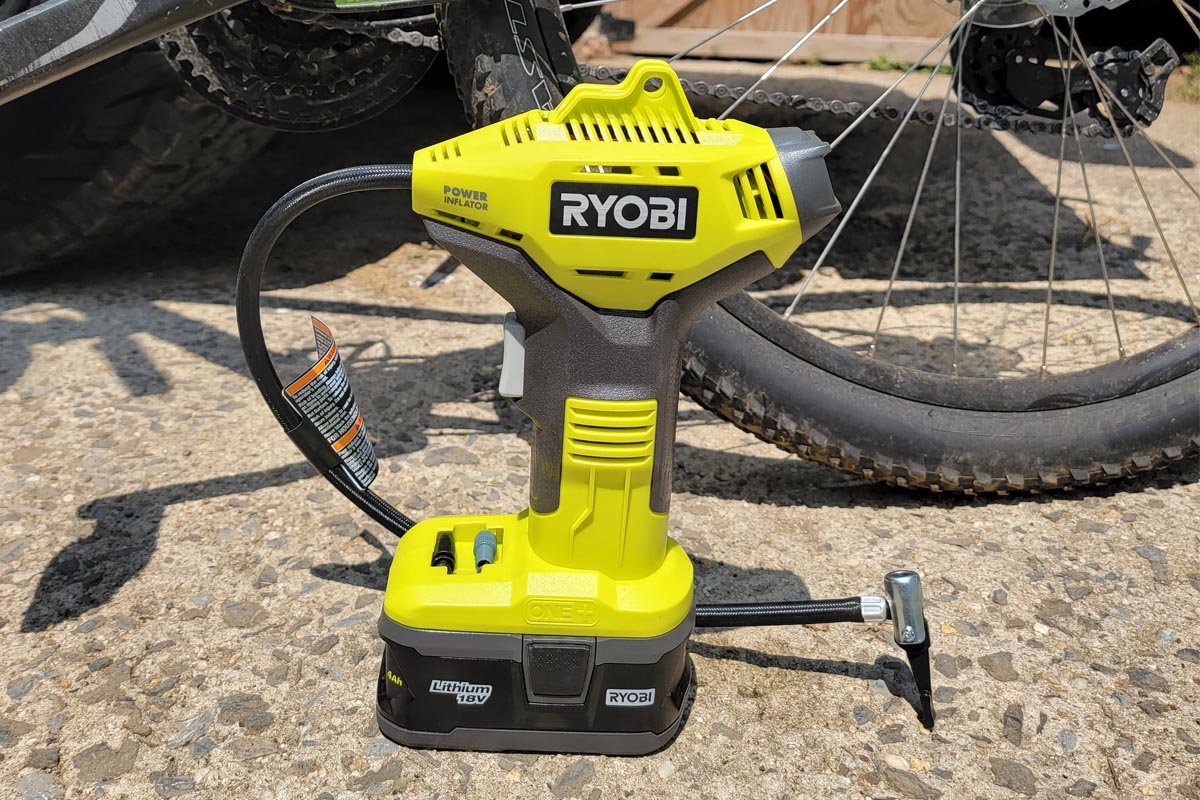

We may earn revenue from the products available on this page and participate in affiliate programs. Learn More ›
Whether it’s inflating a flat tire, bumping up the pressure on a mountain bike, or inflating a pool float, having a powerful and capable portable tire inflator is important. Properly equipped, a DIYer can cut the amount of time it takes to inflate a variety of items by reducing the setup and breakdown time of a large air compressor. Can the Ryobi tire inflator be that model? That’s what this guide aims to find out.
The Ryobi tire inflator is an 18-volt battery-powered cordless inflator that’s just about as portable as they come. Out of the package, this inflator includes all the components necessary to inflate bike and vehicle tires, pool floats, air mattresses, and sports balls. It also features a digital readout on the back of the unit to keep track of the pressure inside. In short, this Ryobi tire inflator aims to be a one-stop inflation solution.
But is it? Is this affordable cordless tire inflator capable? Can it do the job usually reserved for loud, large, heavy-duty air compressors? I put the Ryobi tire inflator through its paces in order to report back on its capabilities. Keep reading to find out how it fared.
Verdict: The Ryobi tire inflator is loud and maybe a bit bulky, but it’s powerful and capable.
Rating: 8.4/10
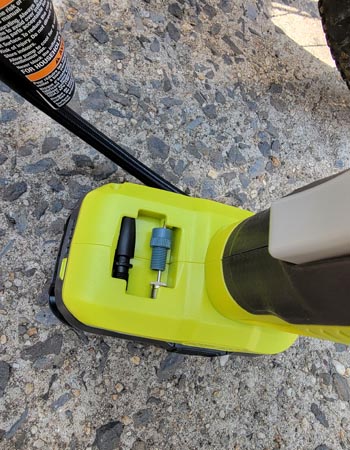
PROS
- Cordless portability
- Incredibly easy to use
- Plenty of power
- Budget-friendly
CONS
- A bit bulky
- No auto-off feature
- Pressure needs topping off
Get the Ryobi P737D 18-Volt ONE+ Portable Cordless Inflator on Amazon for $124.97
Plenty of Power in Several Ways
The Ryobi tire inflator might be a budget-friendly purchase, but the minimal price tag doesn’t come at the cost of power. This model can produce up to 150 psi of air pressure, allowing it to handle almost anything. I even tested the inflator on full-size truck tires, which it handled very well.
As far as power is concerned, it excels in more than just pressure. The Ryobi tire inflator uses the brand’s 18-volt lithium-ion battery lineup, which offers a long battery life. With the 4.0aH battery, the tire inflator handled bike tires and a basketball before moving on to a truck tire during testing. When I pressed the battery life indicator button to check on its remaining life, it revealed that all that inflating took just half of its battery life. This was impressive, considering that it took just 2 minutes to bring a truck tire from 30 to 40 psi.
One downside worth mentioning is that I found I had to “top off” the pressure. Once it built to the pressure I desired, I discovered that removing the nozzle and checking the actual pressure showed around 2 psi less than the inflator. However, with just a quick topping off, it was ready to go.
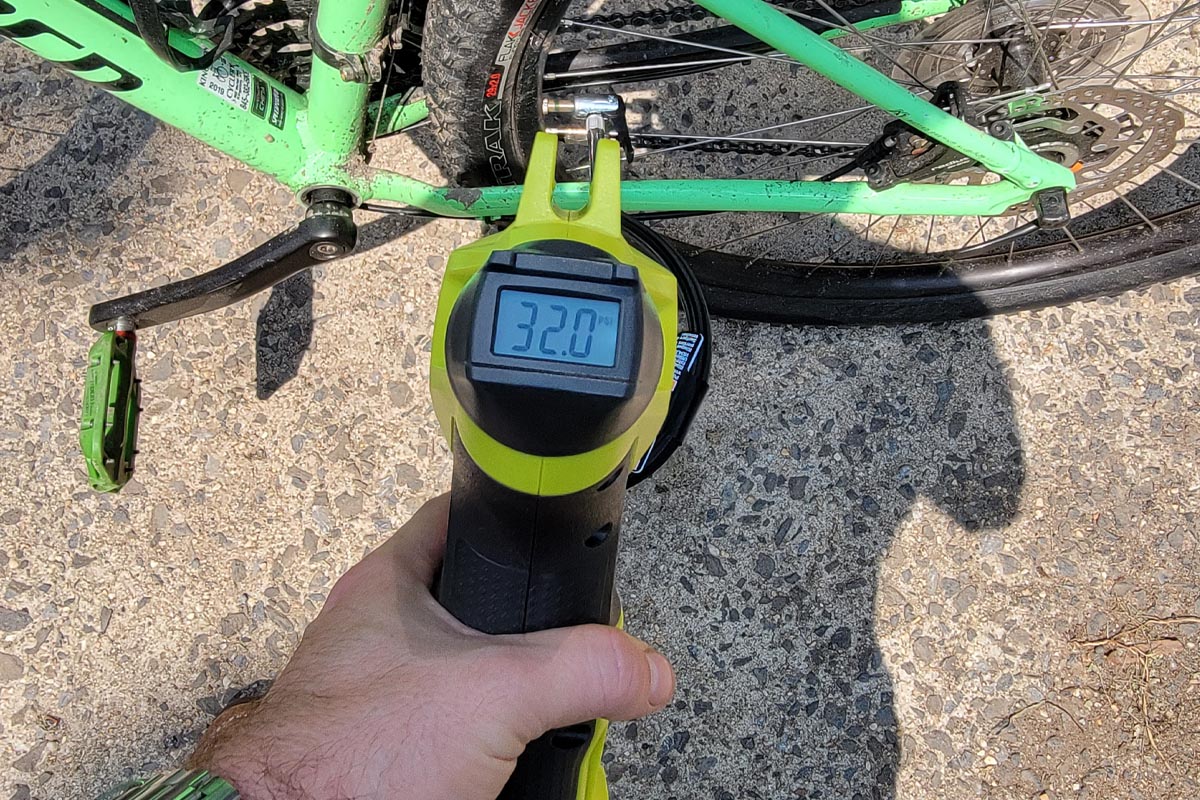
Easy to Use and Intuitive
When it comes to setting up and using the Ryobi tire inflator, it couldn’t get much easier. This model features a snap-on connector that latches onto Schrader valves easily. For Presta valves (which many bikes use), it comes with an additional adapter fitting that snaps into the nozzle.
Using the Ryobi tire inflator involves simply squeezing the trigger until it reaches the desired pressure and then letting it go. This model features a digital gauge in the back of the unit that allowed me to monitor the pressure, an upgrade from the older analog model. It doesn’t offer an auto shut-off feature and would only run while I was holding the trigger, but I feel that its simplicity is probably a good thing.
Noise and Size May be a Factor
Realistically, all tire inflators are going to be noisy. They have pistons inside that compress air and push it through the hose, creating a bit of turbulence and chatter. That being said, I discovered that the Ryobi tire inflator is louder than some of the other tire inflators I tested. It’s not so loud as to be unbearable, but understand that folks inside the house will know you’re using it in the garage.
In photos, the Ryobi tire inflator looks very compact. In real life, it’s actually a little bulky. Those expecting the grip to feel like a power drill will be disappointed, as it’s much larger than the Ryobi 18V drill and driver handles. By itself, I might not have noticed the bulkiness. But when compared to other leading tire inflators, the grip is much thicker. However, if this tire inflator were much thinner or more streamlined, it would also likely cost much more.
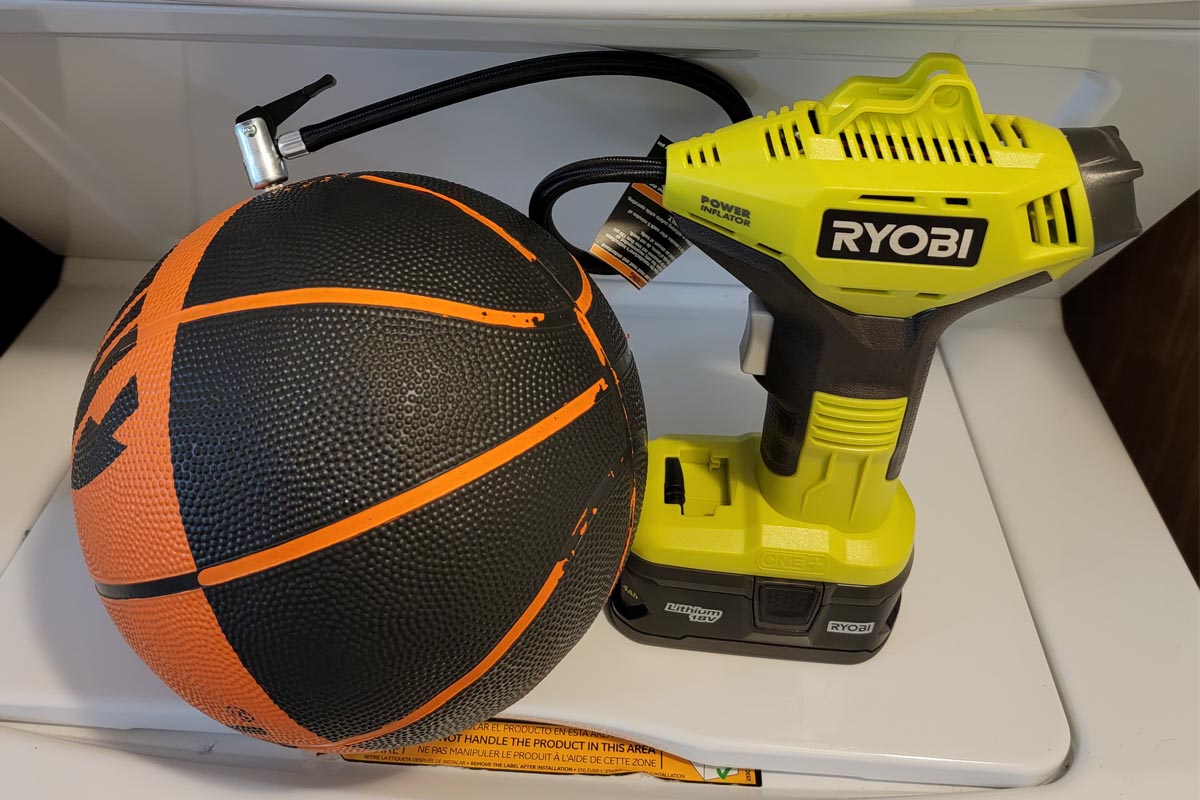
The Value is Outstanding
It’s true: There are less expensive tire inflators. But when it comes to high-pressure models that are easy to use, the Ryobi tire inflator is a great value. Priced at around $125, this powerful tire inflator not only works, but it works quickly. In fact, it was the fastest inflator in the tests I performed.
With this tire inflator, I could bump up the pressure in vehicle tires, inflate pool floats, restore the pressure in sports balls, and even inflate air mattresses. It conveniently includes the required nozzles, adapters, and needles for all those tasks, so it’s truly ready to go out of the box. Other than battery charges, it doesn’t require any maintenance—there is value in that point as well.
Several additional features would make the Ryobi tire inflator an even better deal, like an auto shutoff or a trigger lock that keeps the compressor running on its own without the press of a finger. But those options would be unreasonable to expect at this price point.
How We Reviewed Ryobi Tire Inflator
To understand what makes the Ryobi tire inflator such a good deal, you need to understand how I tested it. Once I charged the battery, I set out to see what this tire inflator could do.
The first test involved pumping up bike tires, so I let the air out of my 29-inch mountain bike tires. I tested how easily the tire inflator connected to those loose, flimsy Schrader valves and how well it pumped them up to 32 psi, which is where I typically keep them.
The next test involved pumping up a basketball. I inserted the inflation needle into the basketball and sat on the ball to deflate it. Then, I boosted it up to 8 psi, which is right around where the NBA recommends it.
The final test involved taking the Ryobi tire inflator from light-duty work to heavy-duty tasks. While some compressors aren’t suitable for truck tires, I don’t own an actual car, so I used my truck tire to test this product. I lowered the pressure on the tire to about 30 psi and then boosted it back up to 40 psi to see how long it would take and how much battery life it would consume. The Ryobi tire inflator had no problem doing this twice, taking just over 2 minutes each time. Additionally, all of this inflation reduced the 4.0aH battery’s life by just half—pretty impressive for a cordless model.
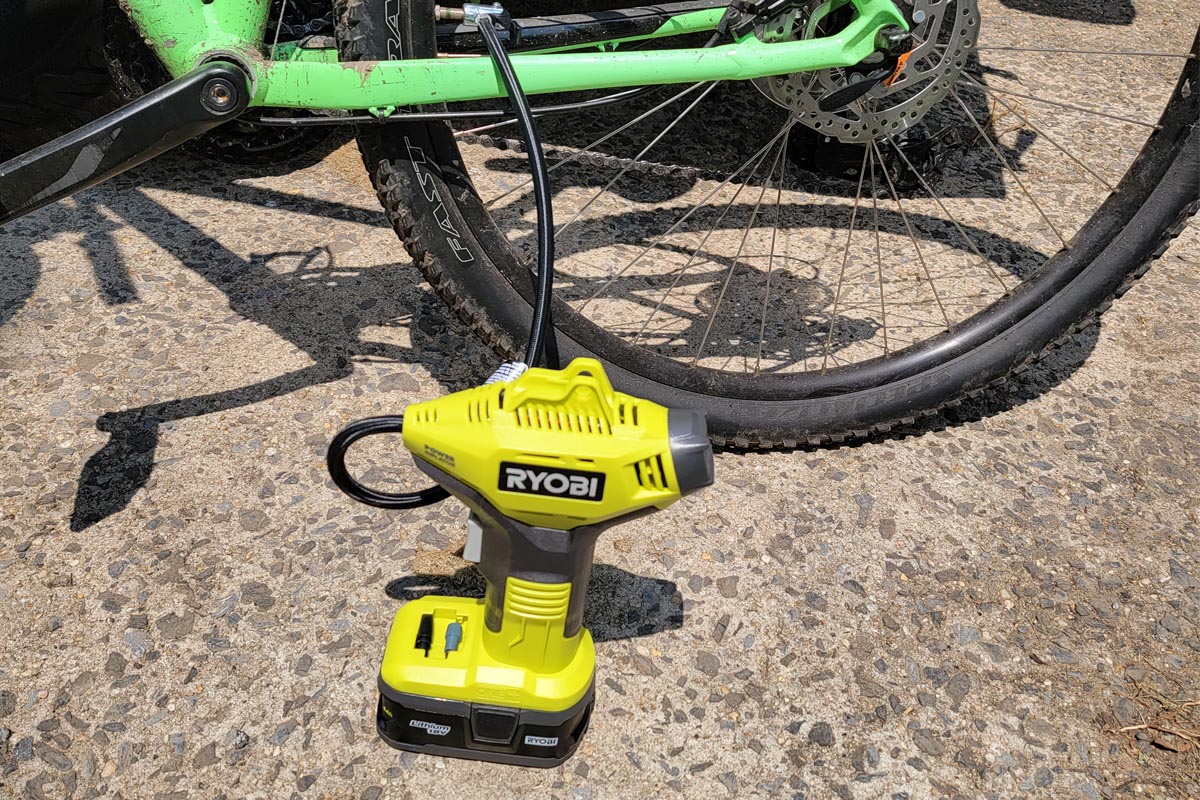
Should you choose the Ryobi tire inflator?
The question after this test is: Should you choose the Ryobi tire inflator? I think the answer is yes for several types of people.
For one, anyone already invested in the Ryobi 18-volt battery lineup should certainly consider adding this piece to their collection. It uses the same batteries as the brand’s drills, saws, lawn equipment, and other power tools. There are ways to buy this tire inflator as a tool-only purchase without a battery to save money, but who doesn’t want to add an extra 4.0aH battery to their arsenal?
Beyond those who already own Ryobi 18-volt tools, the Ryobi tire inflator is a great choice for folks who don’t have room for a full-size air compressor. It’s also a smart move for outdoorsy types who might need to inflate the tires on a bike or SUV while out on an adventure. This inflator can easily fill a vehicle tire without taking up a lot of space in the trunk.
It’s also great for DIY mechanics who enjoy maintaining their own vehicle. Instead of having to set up a compressor, run a hose, and find a tire chock, the Ryobi tire inflator is ready to go as soon as it receives a fresh battery. That convenience alone makes it worth considering.
But overall, anyone searching for a low-cost, low-maintenance, high-pressure, and long-lasting portable tire inflator will enjoy this budget-friendly yet reliable model from Ryobi.
Get the Ryobi P737D 18-Volt ONE+ Portable Cordless Inflator on Amazon for $124.97
